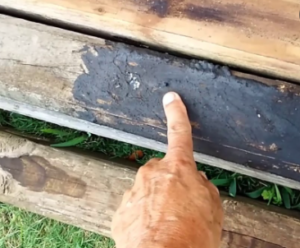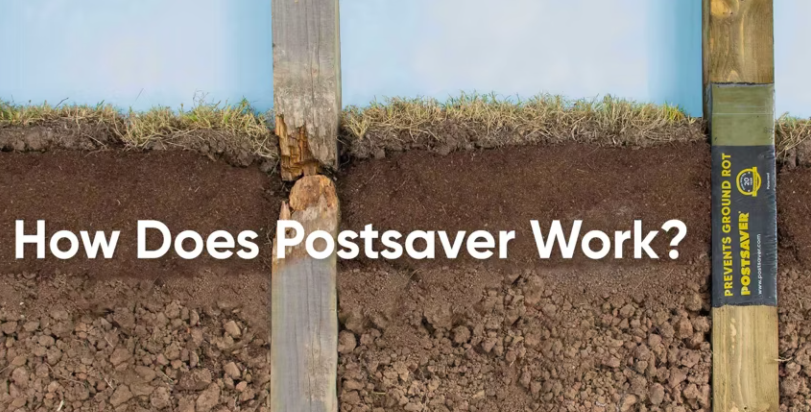Fence posts are the main source of strength for any fence structure. Most issues that arise with a fencing system will stem from a weakened or damaged fence post. Paramount Fencing understands the importance of protecting and caring for fence posts. Our best advice is to install the posts correctly the first time to help avoid having to go back and remove fence sections to replace a damaged post.
But how does a landowner protect their fence posts?
Beginning in the mid-1800s, fence posts, wood light posts, and railroad tracks were dipped into creosote tar and then installed in or near the ground. However, in recent years, the EPA has issued many warnings of creosote posing cancer, health, and environmental risks. Many states now have laws prohibiting burying posts or poles treated with creosote.
This shift away from creosote helped develop the current pressure treatments used on lumber today, but no pressure treatment is perfect.

A pressure-treated pine fence post installed directly into the ground has a 5-8 year lifespan before environmental conditions begin to take their toll.
Ground rot is the biggest risk to wooden posts. Moisture held in the soil, combined with decaying leaves, grass clippings, and shade creates the ideal biome for wood-destroying microorganisms. Because of the posts’ natural position in the ground, the rot will take the worst effect at the base of the fence, causing strength and structural issues. As more damage takes place, posts are at risk of rotting away or snapping off.
To prevent this, Paramount Fencing recommends using PostSavers.


PostSavers are heat-shrinkable sleeves lined with a meltable bituminous liner. The sleeves are heat-applied to wooden posts to create an airtight and watertight seal around the ground contact line of the post. The dual-layer barrier keeps the preservative in and the moisture and microorganisms out.
By preventing rot before it can start, properly installed PostSavers are guaranteed to extend your fence posts for up to 20 years.
PostSavers can be used in many applications:
Fence Posts: Postsavers can be used on residential and commercial fence installations, as well as agricultural. Postsavers can be used on farm fencing, field fencing, horse fencing, yard fencing, garden fencing, and any other wooden fence installation.
Gate Posts: Postsavers used on gate posts protect the largest posts from rot. Gate posts are a fundamental piece of any fencing project and provide strength and stability. A gate with a damaged or weak gate post is subject to damage itself or will not function properly.
Wooden Decking: Postsavers applied to wooden deck posts protect against rot and help deck posts remain strong and standing. Rotting posts can make decks non-secure and unsafe. Post replacements on decks are strenuous and expensive, as decks need to be unassembled to access and replace rotting posts.
Trees: Postsavers can be applied to saplings or young trees to protect against trunk rot. Many young trees are susceptible to truck damage caused by the naturally occurring bacteria and fungi in the soil. Postsavers protect trees from these microorganisms, minimizing the amount of trunk breakage. Postsavers protect in any weather conditions.
Utility Poles: Polesavers are also available to protect wooden utility poles from rot. In many areas, including Florida, wooden utility poles are still used. Many of these utility poles can be seen down after hurricanes or even Florida’s afternoon storms, causing damages to property and power outages. Utility poles equipped with Polesavers are protected from rot and are less likely to topple during inclement weather.